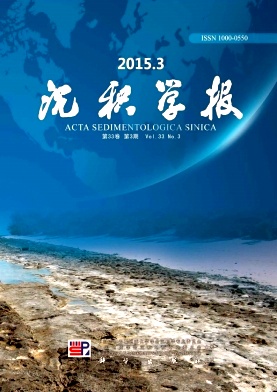Sandbody Distribution and Sedimentary Model in Shallow Lacustrine Fluvial-dominated Delta Front:A case study from Putaohua oil layer of Yongle area in Songliao Basin
doi: 10.14027/j.cnki.cjxb.2015.03.002
- Received Date: 2014-04-15
- Rev Recd Date: 2014-09-03
- Publish Date: 2015-06-10
-
Key words:
- shallow lacustrine /
- fluvial-dominated Delta /
- monosandbody /
- sedimentary model /
- sandbody distribution
Abstract: In recent years, a special kind of delta was found in ancient Songliao Basin and modern Poyang Lake and other large depression lacustrine in China. It is shallow lacustrine fluvial-dominated delta. It is with great differences between normal deltas, including the skeleton sandbody types, vertical sedimentary sequence and facies differentiation etc. Especially, the characteristics of sandbody in delta front is thin thickness and small scale and diversification, which is compared to quite different with sedimentary model of normal fluvial-dominated delta that it include to large scale and thick debouch bar in delta front. In this context, sandbody distribution and depositional model in shallow lacustrine fluvial-dominated delta front, deserves further study. Through analysis of outcrop, modern sedimentary and cores, logging and seismic data, it is realized that underwater distributary channel sandbody as the framework of shallow lacustrine fluvial-dominated delta front is abundant, closely and narrow. It is continual than original understanding and it extends to the far underwater, until disappearing into thin debouch bar and sheet sand. Debouch bar sandbody is not well preserved and is fluvial-dominated. Debouch bar is located mainly in the underwater distributary channel on both sides and the front. It is consistent with the source direction, and has narrow banded morphology. Characteristics of debouch bar is more similar to thin sand under water. In each of the underwater distributary channel is formed in the center of the sequence of sedimentary microfacies. This sequence is underwater distributary channel→ the core of thin sand→ the edge of thin sand→underwater distributary bay from the center to the edge. The study also found that distribution of sandbody is controlled by the position of sedimentary facies in the front of shallow lacustrine fluvial dominated delta. It can be divided into transition zone between high level and low level, shallow water zone of the nearshore, medium depth zone of the shore and deepwater zone of the offshore. Sedimentary model of the nearshore is formed in the transition zone between high level and low level. Its main sedimentary features show that continuous and narrow fluvial-dominated banded deposition is the main sedimentary, with its restrictive and straight distributary channel sandbody as the center. And small scale discontinuous thin sand underwater is more. Sedimentary model of fluvial-dominated banded deposition is formed in the shallow water zone of the nearshore. Its main sedimentary features show that the sequence of sedimentary microfacies is formed with its less restrictive and dendritic underwater distributary channel sandbody as the center. This sequence is underwater distributary channel→ underwater thin sand (residual debouch bar) → underwater distributary bay from the center to the edge. Sedimentary model of terminal distributary channel and fluvial-dominated sheet sand is formed in the medium depth zone of the shore. Its main sedimentary features show that distribution of sheet sand is large area, and is fluvial-dominated. The sequence of sedimentary microfacies is formed with terminal underwater distributary channel sandbody as the center. This sequence is terminal underwater distributary channel→ the core of sheet sand → the edge of sheet sand→ underwater distributary bay from the center to the edge. Sedimentary model of wave-dominated sheet sand is formed in the deepwater zone of the offshore. Its main sedimentary features show that the distribution of single sheet sand is perpendicular to the source direction, and a plurality of sheet sand is arranged parallel to each other. An obvious strip and annulus distribution in the inner sheet sand is formed. The sequence of sedimentary microfacies is the core of sheet sand → the edge of sheet sand→ underwater distributary bay from the center to the edge. Wave-dominated sheet sand is relatively rare in the shallow lacustrine fluvial-dominated delta. Because the river is main effect, and the wave is relatively small in the shallow lacustrine.
| Citation: | SUN Yu, ZHAO Dan, YU LiMin, WANG JiPing, YAN BaiQuan, MA ShiZhong. Sandbody Distribution and Sedimentary Model in Shallow Lacustrine Fluvial-dominated Delta Front:A case study from Putaohua oil layer of Yongle area in Songliao Basin[J]. Acta Sedimentologica Sinica, 2015, 33(3): 439-447. doi: 10.14027/j.cnki.cjxb.2015.03.002 |






 DownLoad:
DownLoad: